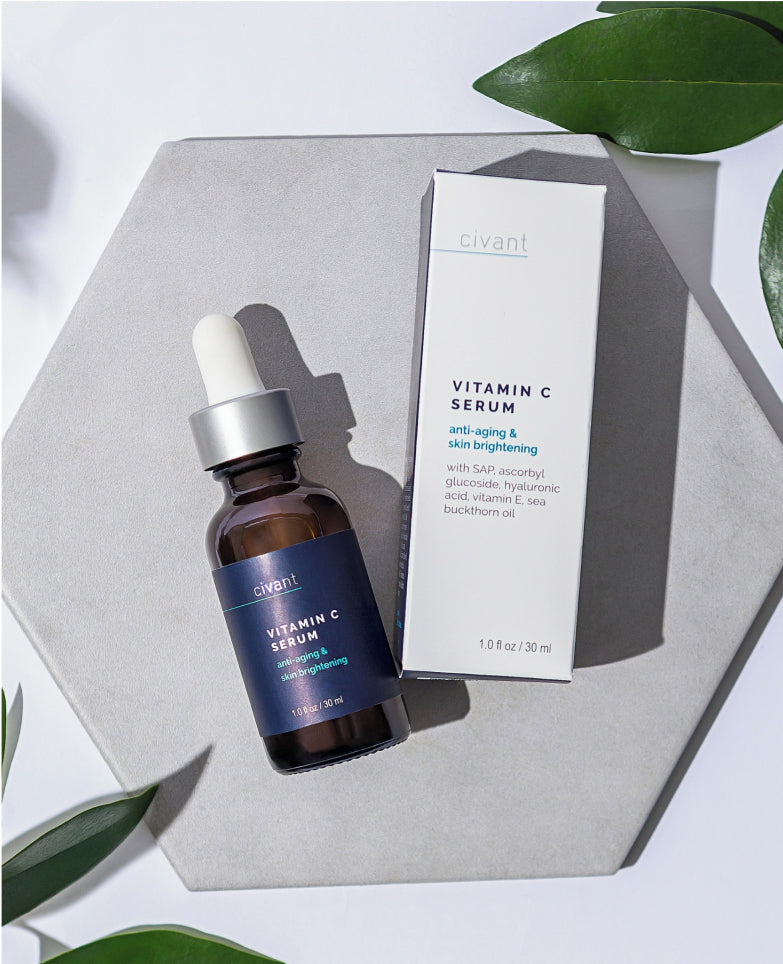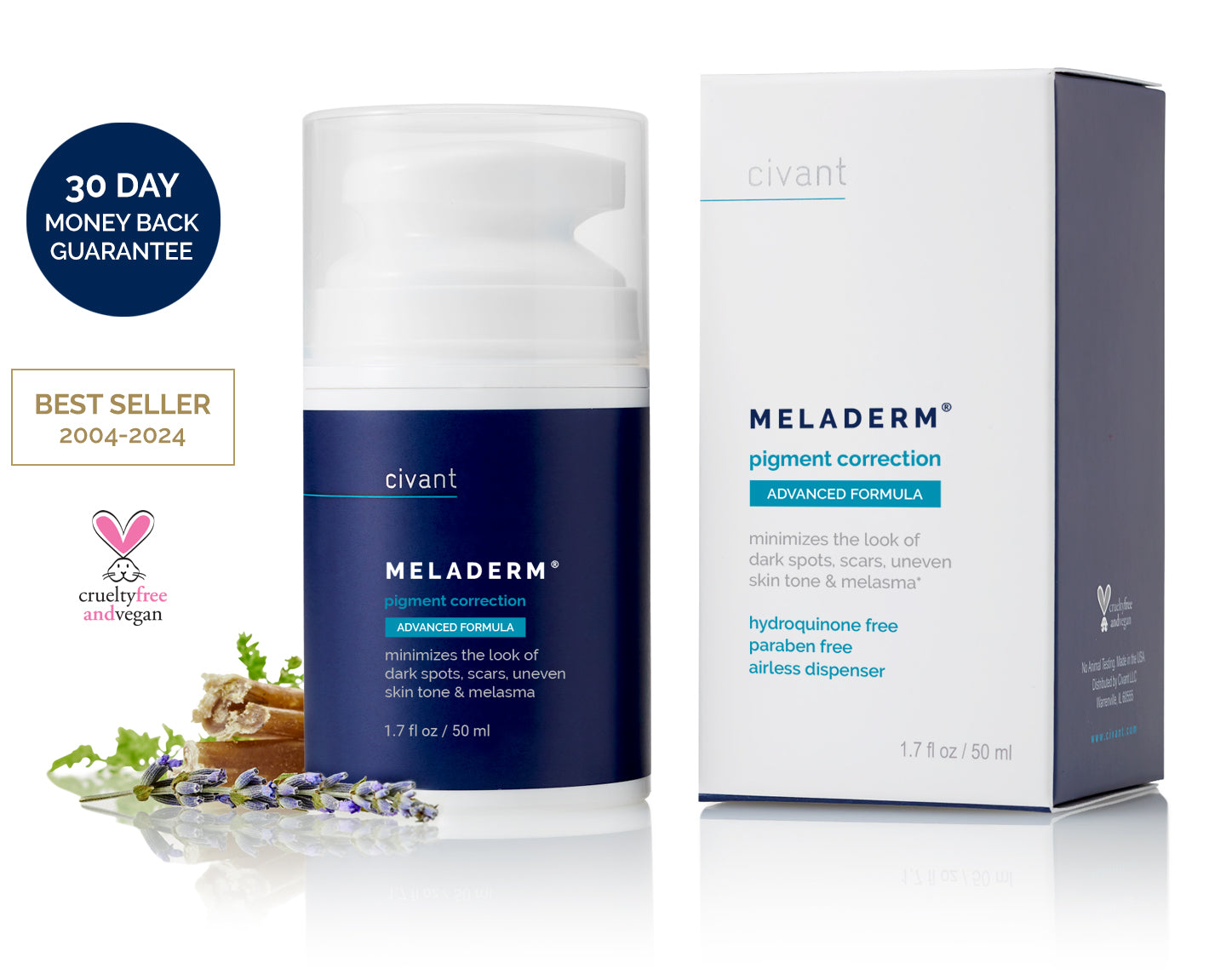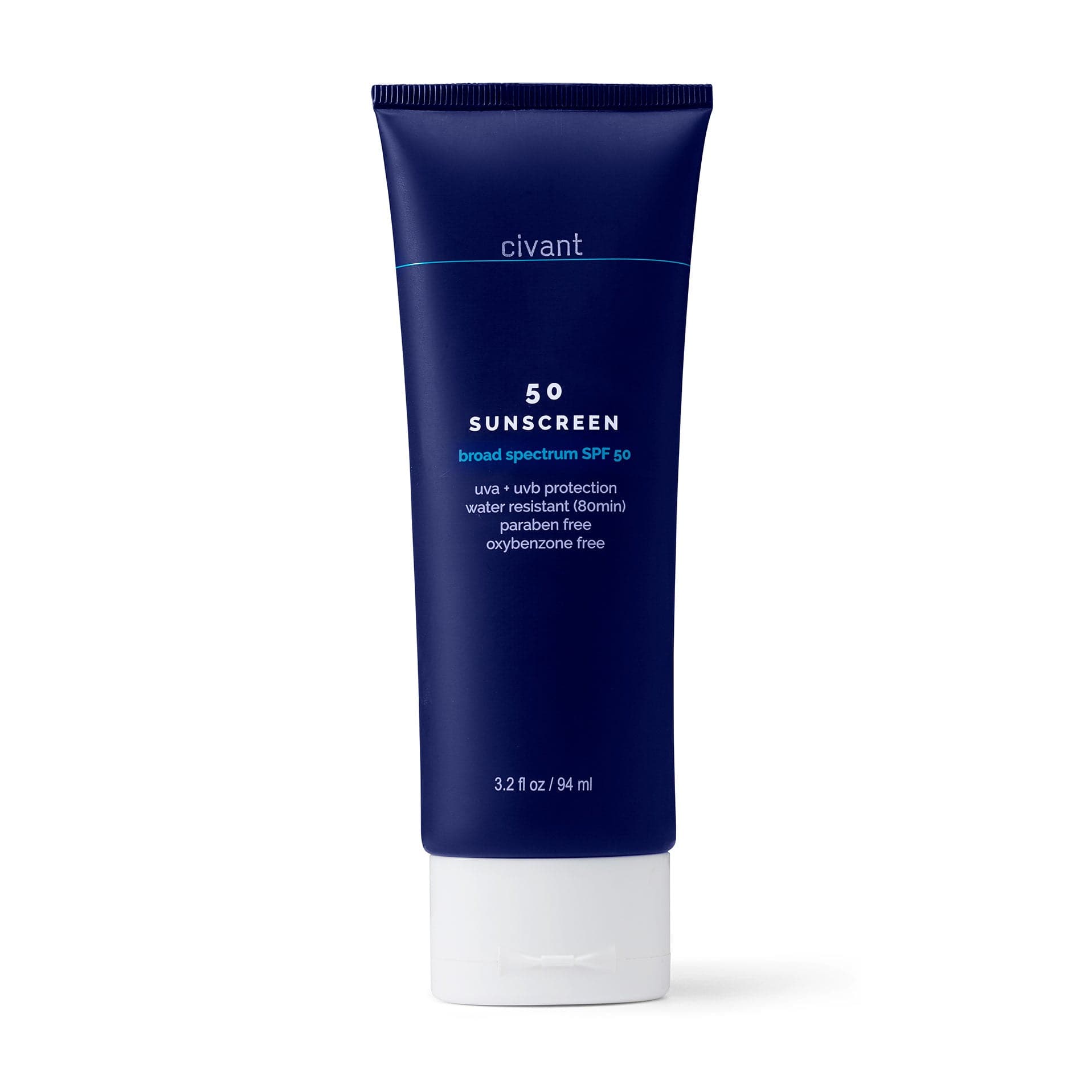You’re at the beauty counter trying to figure out the perfect color-correcting concealer shade for the hyperpigmentation on your upper lip. Do you choose green, purple, or orange? It can be an agonizing game of roulette. Do you know what’s worse? Makeup doesn’t really solve hyperpigmentation, it only hides a potentially worsening condition.
That’s why most skin care professionals recommend getting to the root cause of the hyperpigmentation. It’s in line with the goals of treating hyperpigmentation on the upper lip—decreasing the production of new melanin and increasing the elimination of excess melanin in the skin. Today we’ll break down the:
- Causes of hyperpigmentation on the upper lip
- Pros and cons of the professional treatments available for hyperpigmentation
- At-home skin care regimen for hyperpigmentation
1 - Eliminate the Triggers of Upper Lip Hyperpigmentation
Given that there’s always an underlying cause of abnormal pigment production, you must treat the cause before addressing the symptoms. Hyperpigmentation occurs when the melanin cells in your skin produce more pigment than necessary, causing darker patches and an uneven skin tone.
Hyperpigmentation on the upper lip usually indicates melasma. It’s a skin condition that’s more common in women in their late 20s or older, who have medium skin tones. Let’s break down some of the most common causes of hyperpigmentation on the upper lip and what you can do to eliminate them.
Hormonal Imbalance
An imbalance between the female hormones—estrogen and progesterone—can cause hyperpigmentation on the upper lip. This might be true for you if you:
- Are pregnant; a high-estrogen condition
- Use an oral contraceptive containing estrogen and progesterone
- Are post-menopausal and undergoing hormone replacement therapy
- Suffer from hormonal disorders, such as polycystic ovary syndrome (PCOS)
What can you do?
- Get a hormonal profile test done by your doctor, so they can remedy the imbalance with an appropriate treatment program.
- Wait out the hormones if you’re pregnant. The hormonal mustache usually resolves itself after delivery as hormone levels drop.
- Eat a skin-healthy diet rich in omega-3, vitamins A, C, and E, zinc, and antioxidants. Think fatty fish, walnuts, avocado, broccoli, sweet potato, sunflower seeds, and green tea.
- Switch to a non-hormonal contraceptive such as the copper IUD.
Contact Dermatitis
Contact dermatitis is a skin rash caused by a reaction to an applied substance. Compounding this effect is that as the rash heals, it leaves scar tissue, ripe for hyperpigmentation.
Soaps, makeup, and common cosmetic ingredients, such as essential oils, fragrances, and denatured alcohol, notoriously dry out and sensitize your skin, causing reactions.
What can you do?
Focus your skin care routine on gentle and clean skincare products that contain no hydroquinone, parabens, mineral oil, petrolatum, sulfates, or phthalates. These ingredients tend to clog up, irritate, or sensitize the skin.
“I have struggled with hyperpigmentation for years! I am happy to say that Meladerm has been a lifesaver… I can't believe how good my skin looks!” — Jacalyn

Ultraviolet Light Damage
UV light causes oxidative damage on the skin, which triggers your melanin cells to produce more melanin as protection. And did you know? This type of light damage that triggers hyperpigmentation can come from other sources besides the sun.
For example, tanning beds and high-energy visible light sources, such as fluorescent and LED bulbs, are unexpected culprits. In fact, even direct heat from cooking can exacerbate hyperpigmentation.
So, what can you do? Wear sunscreen!
- Replenish your sunscreen (SPF 30–50) every two hours, even when indoors.
- Use a mineral sunscreen containing iron oxide, to protect against UVA and visible light rays.
-
Wear physical barriers to the sun, including sunglasses, sun hats, and visors.
Phototoxic Reaction to Products
A phototoxic reaction refers to an extreme reaction to sunlight that leads to itchy bumps and rashes soon after sun exposure. Both medications and medical conditions may trigger phototoxicity:
- Medications include some antibiotics, retinoids, nonsteroidal anti-inflammatory drugs (NSAIDs), diuretics, hypoglycemics, and antipsychotics.
- Medical conditions include atopic eczema, psoriasis, lupus erythematosus, and rosacea.
What can you do?
- Avoid overexposure to the sun, wear protective clothing, and frequently apply sunscreen (SPF 30–50).
- Stop taking the medications that trigger phototoxicity after consulting your doctor.
- Take short-term corticosteroids on a doctor’s prescription to put out the inflammatory fires.
Now that we've addressed the underlying causes, how can you treat the existing hyperpigmentation?
2 - Apply the Right Mix of Topical Treatments
Topical skin treatments are gentler than the professional procedures we discuss later. They are the first line of treatment recommended for hyperpigmentation. In addition, they are essential for post-laser treatments to support the results of the procedure.
It’s important to note that topical treatments need to be used in combination, as each ingredient has a key role. Below, we break down the key active ingredients dermatologists use to treat and manage hyperpigmentation.
|
Groups Of Product Ingredients To Combine |
Examples Of Active Ingredients |
Effect Of Active Ingredients On Hyperpigmentation |
|
Inhibitors of Tyrosinase (melanin converting enzyme) |
Alpha Arbutin |
Inhibit tyrosinase enzyme activity, limiting the production of melanin in the skin
|
|
Inhibitors of Melanosomes (melanin transferring structures) |
Niacinamide |
Block the transfer of melanin-carrying cells to the outermost skin layer
|
|
Skin Turnover and Regeneration Agents |
Alpha-hydroxy acids: Citric acid
Beta-hydroxy acids: Salicylic acid
|
Exfoliate uneven, pigmented skin, allowing new skin to push through |
|
Sunscreen |
Titanium dioxide |
Block UVA and UVB light from being absorbed by the skin
|
Expert tip: Start slow with tyrosinase inhibitors, using them a few times a week until you move up to twice a day to avoid skin irritations.
Remember to consult a dermatologist regarding the long-term use of tyrosinase inhibitors even when using research-based, high-quality, pigment-correction products, like Meladerm.
3 - Go Deeper With Chemical Peels
Chemical peels are a controlled chemical burn that use a variety of acids that penetrate through to different skin depths and peel away, revealing new, healthy, less pigmented skin. Glycolic acid, trichloroacetic acid, salicylic acid, lactic acid, and carbolic acid (phenol) are a few of the commonly used chemical solutions during chemical peels.
However, considering the potential for damage, it’s important to get your chemical peel done by a dermatologist or licensed skin care professional who will tailor the mix of acids to your skin needs, skin type, and medical history.
Below, we break down the different types of chemical peels, their downtime, and their effectiveness.
|
Type Of Chemical Peel |
Duration Of Healing |
Conditions Treated |
|
Light chemical peel |
A few hours to a few days |
Fine wrinkles Acne Uneven skin tone Sun-damaged skin |
|
Medium chemical peel |
7–14 days downtime Peeling skin from day 2–8 Redness persists for months |
Moderate wrinkles Acne scarring Moderate skin discoloration |
|
Deep chemical peel |
Two weeks of downtime Redness may persist for up to 3 months |
Deep acne scars Extensive sun-damaged skin Deep wrinkles Melasma |
The downsides of chemical peels:
- A downtime of up to two weeks, depending on the type of peel, may be necessary for healing, with redness persisting for several weeks or months.
- Temporary or permanent discolorations and abnormal pigmentation, also called post-inflammatory hyperpigmentation, may result from the skin peel, especially for medium to dark-skinned people.
- Scar tissue overgrowth (keloids) is a significant risk, especially for those prone to scarring.
- The cost is high, running into thousands of dollars for deep skin peels that require anesthesia and hospital stay.
- Chemical peels only work for surface melasma and can’t be used to treat deep melasma without the risk of scarring and loss of pigment.
4 - Accelerate Hyperpigmentation Reversal With Laser Treatment

Laser treatments fall into 5 broad categories based on the laser wavelength, energy pulse duration, power of the laser machine (fluence), and spot size.
- Intense pulsed light (IPL): Surface improvement of texture and photoaging signs
- Q-switched lasers: Various laser wavelengths delivered in a nanosecond
- Picosecond lasers: Quick bursts of laser energy (one trillionth of a second) are delivered to the skin to remove fine wrinkle acne spots or tattoos
- Non-ablative fractionated resurfacing lasers: Stimulates collagen growth less aggressively
-
Ablative fractionated resurfacing lasers: Removes the thin outer layer of skin and heats the underlying skin to stimulate the growth of collagen
While laser treatments yield more significant results in the short-term than topical treatments, laser treatments are more likely to cause post-inflammatory hyperpigmentation (PIH) and rebound hyperpigmentation.
Laser treatments are the third line of treatment. Due to their potential negative results, they are suitable when hyperpigmentation is extensive, stubborn, and unmanageable.
The downsides of laser treatments:
- Permanent changing of skin color is common for people with darker skin tones who undergo laser resurfacing. They may suffer more stubborn hyperpigmentation or become permanently lighter, losing their natural ability to tan.
- Itching, swelling, pain, and redness are common after laser treatments, with redness often lasting for months.
- Flaring up of dormant cold sores and other viral, bacterial and fungal infections may result from laser resurfacing.
- Applying post-laser creams and bandages can worsen acne and lead to the development of tiny white bumps (milia) on the skin.
Start Healing Your Skin
In a nutshell, skin care professionals recommend regular usage of mineral sunscreen to stop the progress of hyperpigmentation and to support the results of other treatments. The darker your skin, the more active your hyperpigmentation will be, so pursue treatments with caution. Lastly, you always want to start slow with topical treatments, working up to chemical peels and lasers only in stubborn cases.
If you’re looking for a clean, high-quality, naturally derived pigment correction product, try out Meladerm today. Its 10 active ingredients, including arbutin, azelaic acid, vitamin C, licorice root, and kojic acid are based on well-documented skin brightening properties without any harmful ingredients.
Frequently Asked Questions
Should I use hydroquinone to heal hyperpigmentation?
While it’s the most effective active ingredient in the short-term reversal of hyperpigmentation, hydroquinone’s negative effects far outweigh its usefulness.
For instance, some side effects like rebound hyperpigmentation often occur when you stop using hydroquinone. There is also exogenous ochronosis, a permanent blue-black pigmentation, which is a side effect of long-term hydroquinone use (exceeding four months), especially for darker skin tones.
Also, hydroquinone is cytotoxic—it kills and prevents melanin cells from regenerating. As a result, it’s long been banned for cosmetic use in the EU. Thanks to the CARES Act, hydroquinone is now only available through prescription in the US.
When do I apply active skincare ingredients for hyperpigmentation?
It’s better to apply them during your nighttime skin routine, as active ingredients that heal hyperpigmented skin, such as kojic acid and azelaic acid, often make the skin more sensitive to the sun. Meanwhile, ingredients like retinoids break down and lose stability in the sun.
Do Microdermabrasion and Dermabrasion Work for Upper Lip Hyperpigmentation?
Microdermabrasion and dermabrasion, when used on their own, don’t treat upper lip hyperpigmentation (melasma). They primarily remove the outer layer of the skin, which may address superficial marks on the skin, but don’t solve the abnormal melanin production in melasma.




